
Almost 130 years after she died, new technology is revealing further information about Hope the blue whale
© The Trustees of the Natural History Museum, London
The secret history of Hope the blue whale has finally been revealed
Josh Davis
First published 21 September 2018
New research looking at the chemical make-up of Hope's baleen plates has revealed where the blue whale travelled in the last seven years of her life, and that she was pregnant in her last year of life.
On the morning of 25 March 1891, a blue whale migrating up the east coast of Ireland was caught by the low tide and stranded on a sandbar just out from the harbour town of Wexford.
The whale was young and not yet fully grown, but that didn't stop the locals from taking great interest in the 25.2-metre leviathan from the deep that had been grounded so close to shore.
After two pitiful days struggling in the shallows, a lifeboat pilot named Ned Wickham rammed an improvised harpoon under the whale's flipper, finally putting the poor animal out of its misery.
The whale was then auctioned off, her body butchered and blubber boiled down. Eventually all that remained was a 4.5-tonne skeleton, which was sold to the Natural History Museum for £250.
After spending decades in the Museum's Mammals gallery, in 2017 the skeleton was remounted in Hintze Hall so that the whale, which has since been named Hope, can greet visitors as they enter the Museum.
For almost 130 years, that has been the sum knowledge of this unfortunate whale's life.
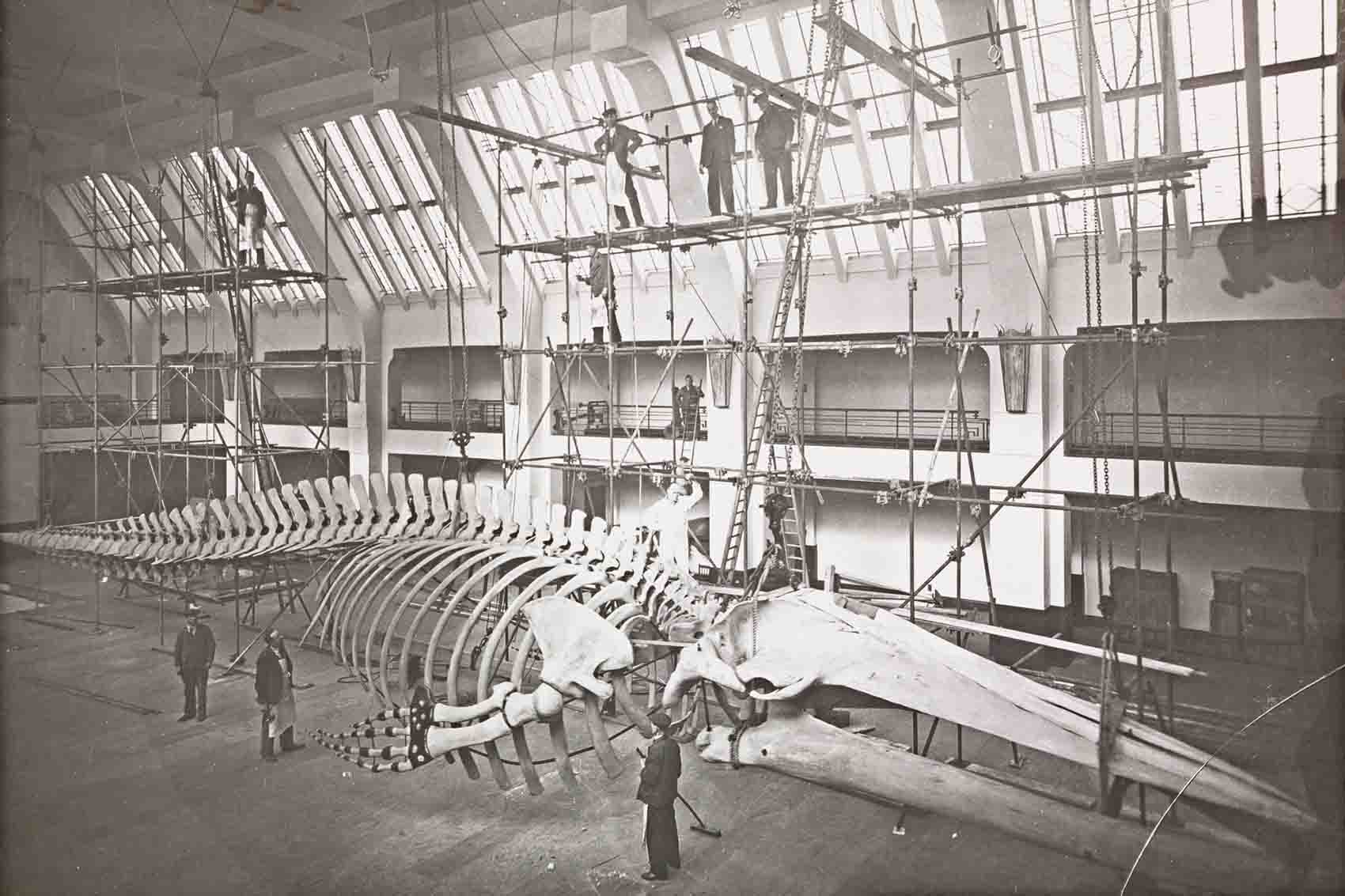
In 1934 Hope's skeleton was hung in the Museum's mammals gallery
© The Trustees of the Natural History Museum, London
But cutting-edge science is now helping to unravel the history of Hope, giving an astonishing insight into the last seven years of her life. Published in the journal PeerJ, the research has revealed not only where she was migrating in the North Atlantic Ocean but also that when she stranded on that sandy spit, it was likely after becoming a mother for the first time.
The final years of our blue whale
By analysing the chemical make-up of the whale's baleen - the flexible plates that hang inside a whale's mouth - the researchers have found three distinct phases in Hope's relatively short life. While blue whales can live to a hundred years old, Hope may have been as young as 15 when she stranded.
Dr Clive Trueman, who is based at the University of Southampton and conducted the isotope work looking into Hope's movements, revealed that about seven years before she died, Hope was living in the subtropical waters of the Atlantic - perhaps the Azores, Cape Verde or Mauritania.
After spending at least a year feeding and growing in these waters, Hope began migrating.
Modern blue whales in the northern Atlantic tend to spend their summers feeding around Iceland, Norway and as far north as the Arctic Circle. Ocean upwellings cause plankton to bloom, providing food for the krill that whales feed on. As winter sets in and the ice begins to form, the whales then move south, past the western coasts of Ireland and Iberia, and back into warmer subtropical waters.
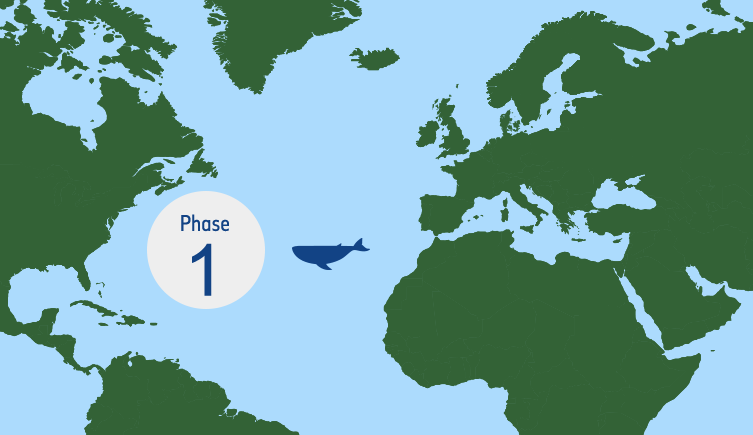
Hope's final seven years can be broken into three phases: the first is when she matures in warmer waters, the second when she starts migrating between the north and south, and the third when she returns to subtropcial waters to breed before stranding off the eastern coast of Ireland
© The Trustees of the Natural History Museum, London
The pattern of carbon isotopes in Hope show that she was making the same migration. The final phase of her migration, however, threw up some confusion.
'There is a period of about a year at the end of her life where we really struggled to simulate where Hope was moving with our models,' says Clive.
A new mother
There is one significant reason that could cause a blue whale to dramatically shift its migratory movements: breeding.
Dr Natalie Cooper, a Museum researcher who initiated the study, explains, 'When they are giving birth to calves, the blue whales go back down to the south as they breed mostly in the warmer waters south of the Azores. They have a calf and rear them for about eight months until it is big enough to look after itself, before leaving the calf in the warm waters and moving back north again.'
At the moment it is impossible to be certain that this is what Hope did in the year before she died, but the isotopic ratios in her baleen suggest that she did return south.
'The mismatches in isotope ratios are consistent with what we'd expect if she were pregnant,' says Clive.
New data revealing the levels of different hormones present in the baleen confirm that Hope most likely gave birth to a calf in the last year of her life.
After spending about a year in the subtropical Atlantic waters raising her calf, Hope once more turned north to resume her annual migrations.
It was while moving north along the coast of eastern Ireland that tragedy struck and Hope ended up on that fateful sandbar near Wexford.

Taken in 1891 on the day the whale stranded, it is one of only a few images of her before she died
© National Museum of Ireland
Cetacean CSI
To track Hope's movements, the team decoded the stable carbon isotope ratios preserved in the whale's baleen. They used a mixture of established techniques as well as some new, computer-based models.
The mouths of blue whales are filled with long flexible plates of baleen, rather than teeth, which hang from the upper jaw. As they feed, the baleen filters out krill from the sea water.
Teeth are made of mineral-rich dentine and enamel, but these baleen plates are instead formed from keratin. This is the same material that makes up our own hair and fingernails. As it's being made in the body, keratin will incorporate certain molecules and so preserve a biological record.
'The nice thing about keratin is that once it's laid down, it doesn't change,' says Natalie.
'Bones and blood will turn over in the body and be replaced, but once keratin has been made it stays like that until it falls off. The same thing applies to baleen.'
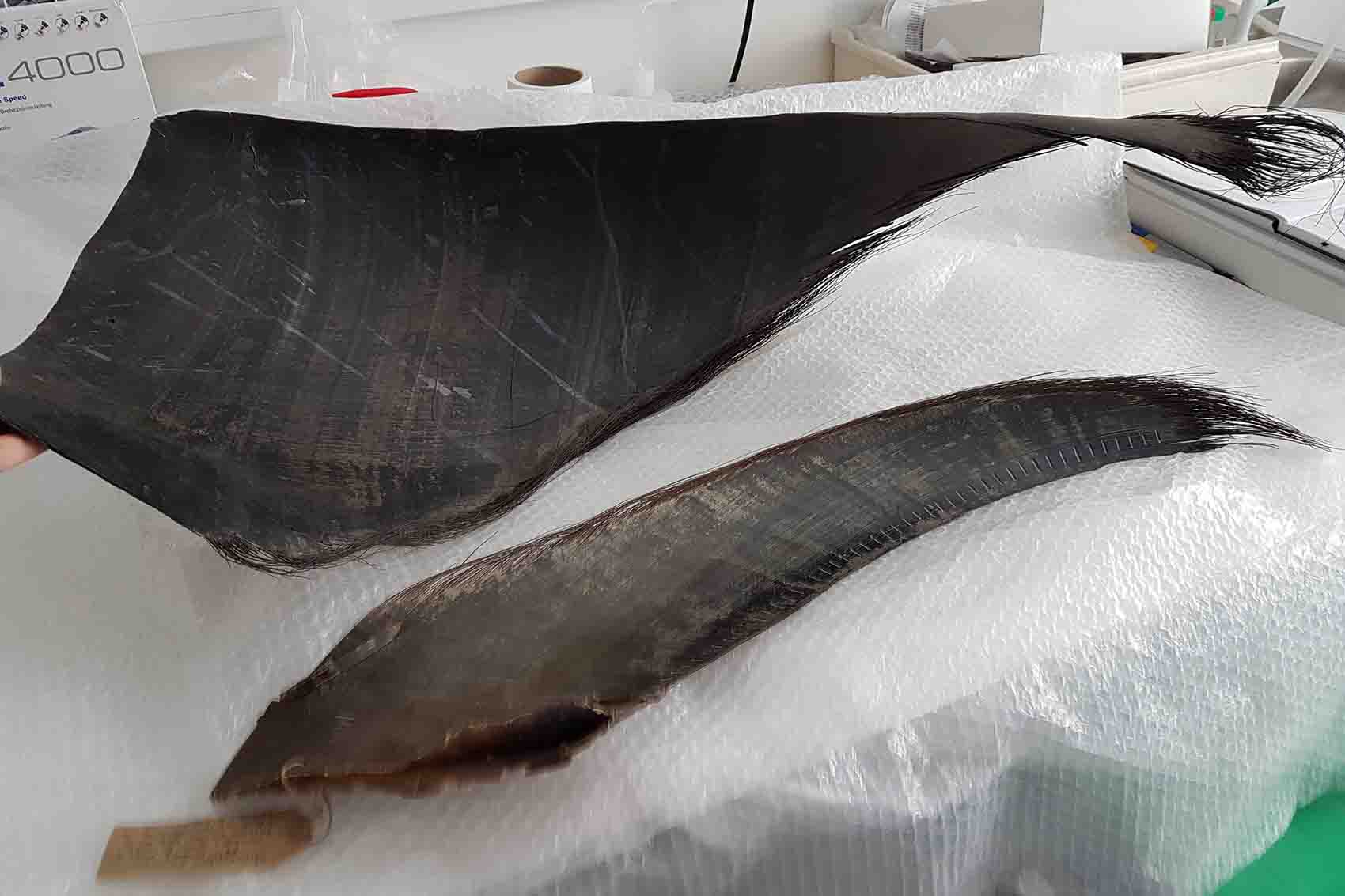
The baleen recovered from Hope compared to that of a fin whale, the second largest species of cetacean
© Clive Trueman
Typically baleen is much longer than hair or nails, preserving a much older record. With Hope, it is thought that the baleen recovered records the last six or seven years of her life. Considering it is estimated that she was roughly 15 when stranded, this represents almost half of her life.
The researchers were looking at the ratio of carbon isotopes laid down in the keratin.
Modelling a whale's journey
When it comes to certain elements like carbon, the atoms can exist in a number of forms or isotopes. These isotopes differ in mass and are referred to as light and heavy isotopes.
'We can look at the ratio between light and heavy carbon isotopes recorded in the baleen over time, and then we can compare that ratio to what is going on in the oceans and see where they match up,' explains Natalie.
To do this, the researchers took more than 100 samples from the baleen, working out at around one sample for every four weeks of Hope's final years. These samples were then burnt, and their chemical make-up recorded.
The team then how the isotope ratio varies across the ocean, incorporating the swirling ocean currents, temperature and seasons.
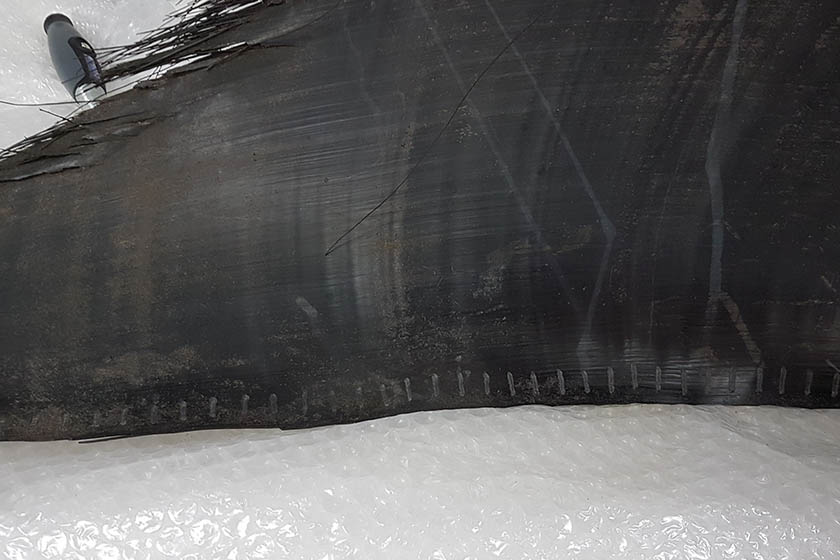
The scientists sampled the baleen every few centimetres by using a drill
© Clive Trueman
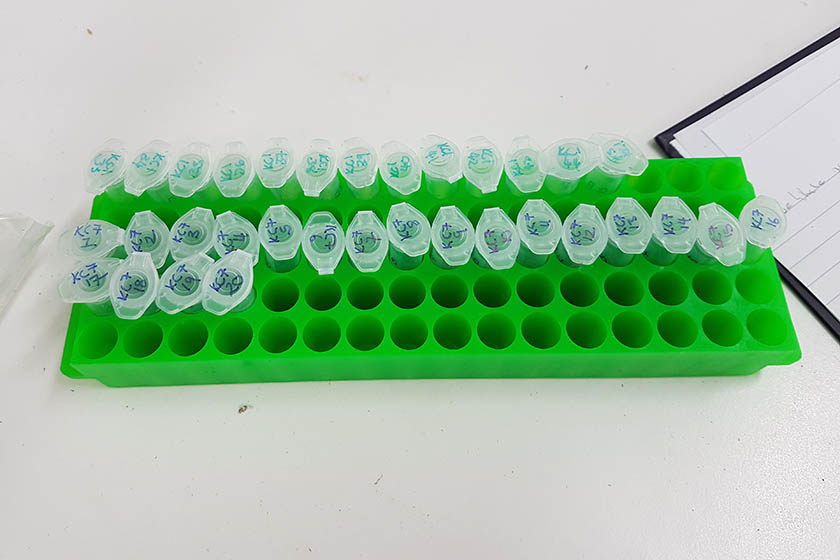
Each sample represents roughly four weeks over the last seven years of Hope's life
© Clive Trueman
Clive explains, 'We built some computer-generated whales and put them into our isotope model - something that no one has done before. We made them migrate along different routes, and as they swam and ate they acquired the isotopes found in particular places at a particular time.'
After running hundreds of whale simulations, the team could then see which computer-generated baleen had an isotopic record that best matched that which was actually observed from Hope's baleen.
New insights into a threatened species
The work is not only shedding light on the Museum's whale but adding to the knowledge about the behaviour and migration routes of modern North Atlantic blue whales.
Very little is known about this population. By the time scientists started to study them, a global whaling industry had already devastated their numbers. While the population has shown some signs of recovery, studying these creatures over long periods of time still has its limitations.

Blue whales - the largest animal to have ever lived - were nearly hunted to extinction
© Andrew Sutton/Shutterstock
'Tagging whales is really difficult,' says Natalie. 'The longest study anyone has of a whale is about 18 months because it is hard to get a tag in that will stay and won't interfere too much with the whale.'
With blue whales living to a hundred years, this means that researchers are only able to get snapshots of a whale's movements. The data from Hope gives a much more rounded picture of what this population was doing, although it is far from perfect.
'We couldn't ever say that what we infer from Hope is true for all blue whales in the Atlantic,' reiterates Clive.
'But if you find one animal taking a particular route, then it's probably not the only whale doing it.'
Hope for the future
There are many other tissues made by animals that are laid down sequentially, meaning that they also record time - so the same methods used on Hope's baleen could also be applied to other animals.
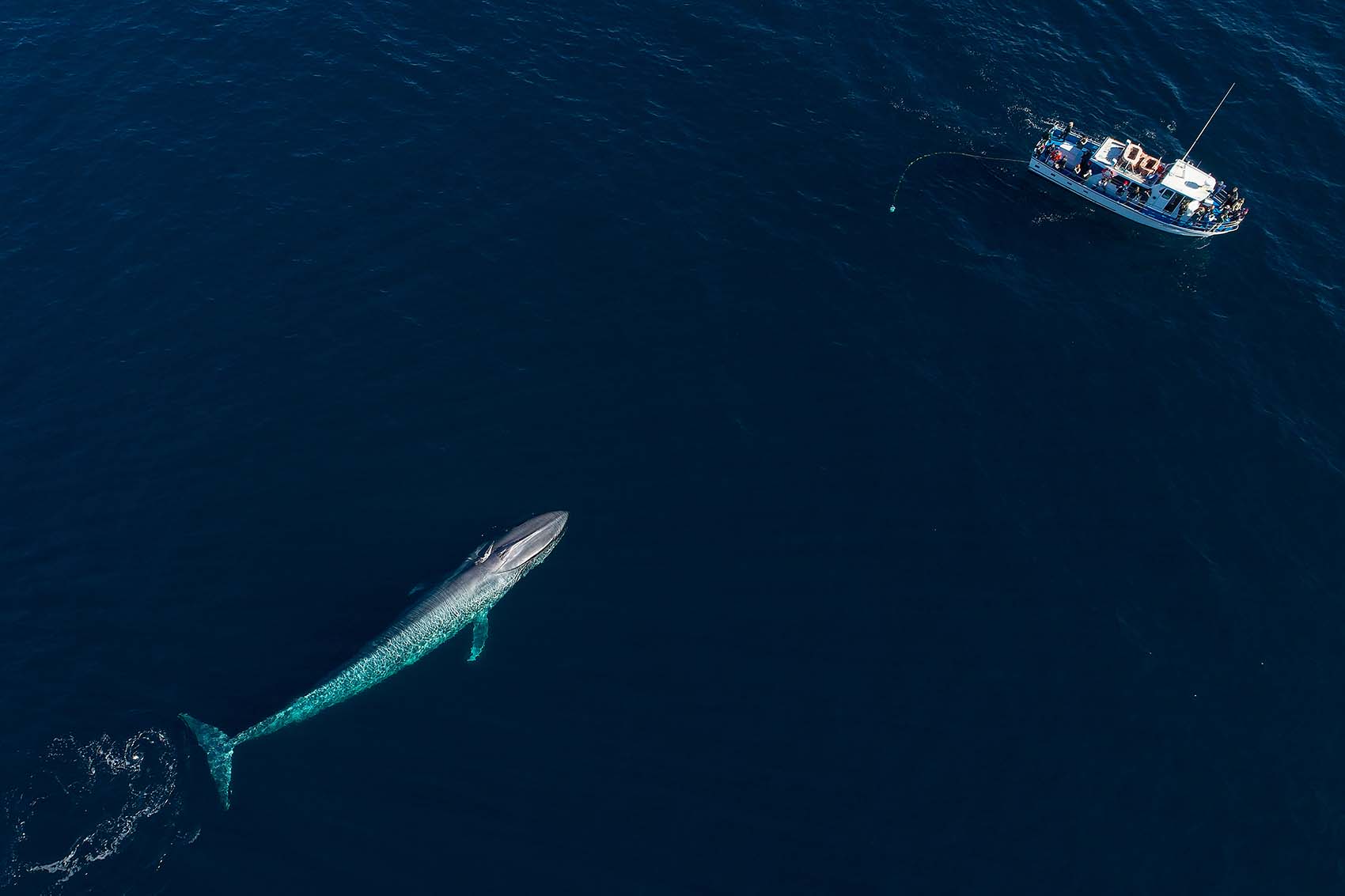
Despite their massive size, there is still a lot we don't know about the blue whales living in the North Atlantic
© Chase Dekker/Shutterstock
The scutes on the shells of sea turtles, for example, are also made from keratin and grow outwardly, laying down information about where the turtles travelled. And the teeth from some marine mammals grow in layers that may also yield usable information.
This could potentially allow researchers to track a host of other species, from baby turtles to deep diving whales, that have continued to elude scientists.
Despite having been in the Museum's collections for 127 years, the remains of the young blue whale are still giving up her secrets, paving the way for further work that could help to protect species still alive today.
'We need to keep saving these kinds of because if we only have the historic collections it becomes more and more difficult to compare what you have in the past to what you've got now,' says Clive.
'There is a real call to keep refreshing these collections from whale strandings. Museums shouldn't only be repositories of old things.'
- The research has been published in the journal PeerJ, with further analysis of the hormones preserved in the baleen hoped to confirm that Hope did indeed give birth just before her demise.
- The study is a collaboration between the Natural History Museum, the National Oceanographic Centre at the University of Southampton, and Trinity College Dublin.
- You can follow both Dr Clive Trueman and Dr Natalie Cooper on Twitter.
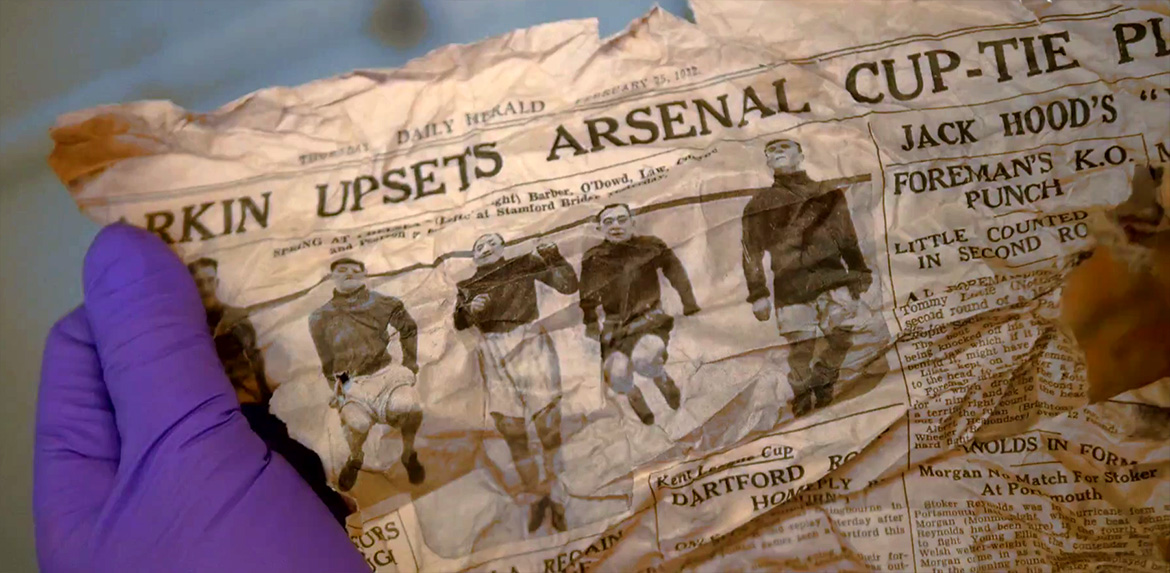

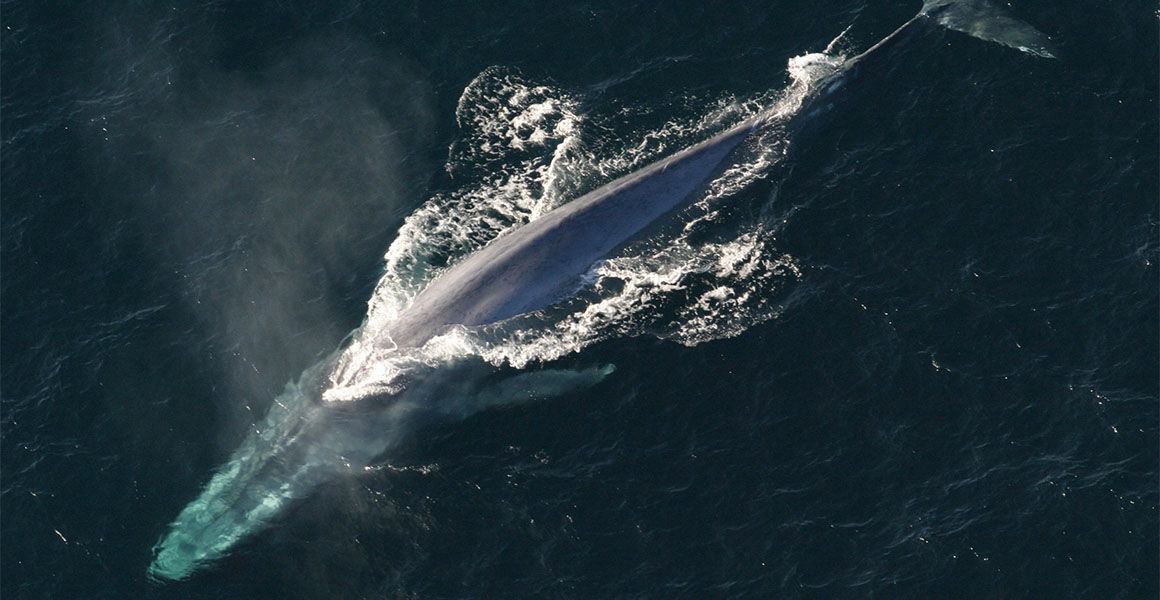

Don't miss a thing
Receive email updates about our news, science, exhibitions, events, products, services and fundraising activities. We may occasionally include third-party content from our corporate partners and other museums. We will not share your personal details with these third parties. You must be over the age of 13. Privacy notice.
Follow us on social media